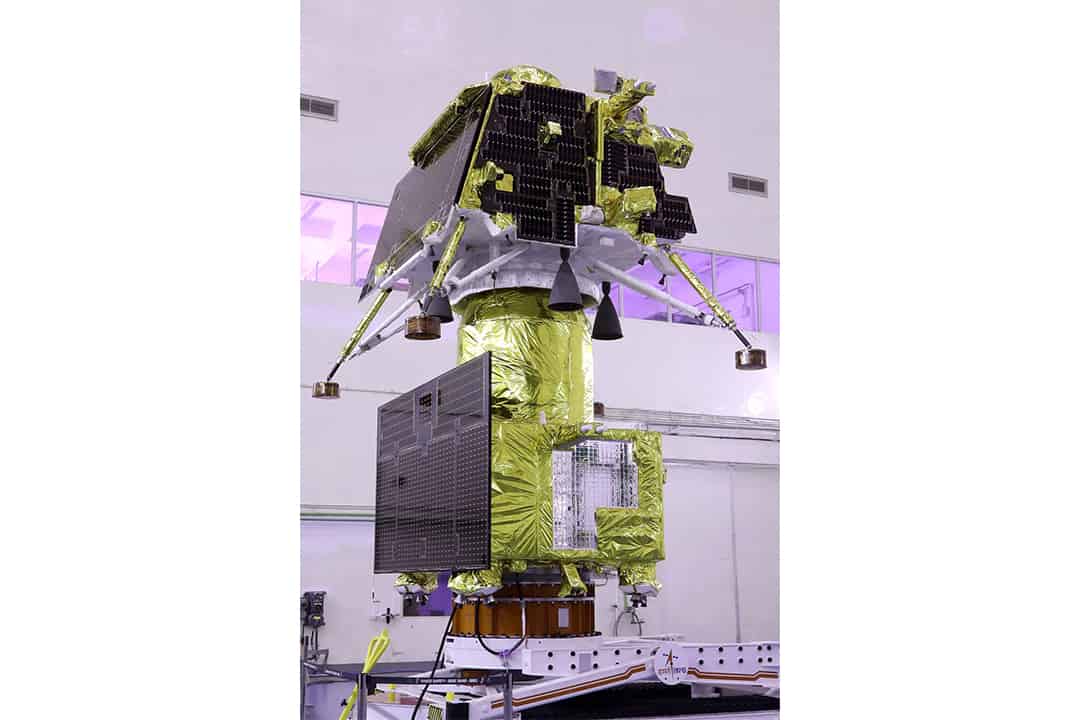“India, I reached my destination and you too!”
This message from the Chandrayaan-3 spacecraft caused the mission control centre of the Indian Space Research Organisation (ISRO) to erupt in cheers as they celebrated the successful touchdown of their lunar vehicle.
On August 23, India became the fourth country in the world to achieve a soft lunar landing, which is when a spacecraft touches down on the moon without incurring damage to itself. As part of the Chandrayaan-3 mission, ISRO launched its lander — a spacecraft assisting with touchdown on the lunar surface — and their rover — a vehicle for exploring extraterrestrial surfaces — to the moon. The mission aimed to demonstrate a soft, safe landing on the moon; conduct scientific experiments; and verify the rover’s functionality.
India’s achievement is particularly impressive as four out of the six global attempts for a lunar landing over the past five years have failed. Beyond this, India also became the first country to land a spacecraft close to the moon’s south pole.
The beginnings of Chandrayaan
India’s journey in lunar exploration began with its first-ever deep space mission: Chandrayaan-1.
ISRO began planning for a lunar mission in 2000, and its ideas eventually materialized in the lunar orbiter Chandrayaan, or “moon vehicle” in Sanskrit. The purpose of this spacecraft was to conduct extensive mapping of the moon’s surface to reveal its chemical, mineral, and photogeological properties.
India successfully launched this orbiter in 2008 and it remained in operation for over a year. Chandrayaan-1 was crucial in helping develop our understanding of the moon — in fact, this orbiter helped facilitate the discovery of water molecules on the moon. Data from an American instrument on board revealed features on the moon’s surface characteristic of the presence of water molecules. In 2018, a complete analysis of the data confirmed that there were indeed regions of frozen water on the moon.
15 minutes of terror
Following the success of Chandrayaan-1, ISRO undertook its first attempt at a lunar landing through the Chandrayaan-2 mission.
India had hoped to land a spacecraft containing a rover on the moon’s surface that would facilitate lunar observation for 14 Earth days. While all was looking good following the launch of Chandrayaan-2 in 2019, ISRO’s mission control centre lost contact with the spacecraft seconds before it was supposed to touchdown on the moon’s surface.
Scientists believed that this failure was caused by a malfunction in the vehicle during the ‘15 minutes of terror’ — a period when the spacecraft must continue its descent to the surface entirely autonomously without intervention from the control centre.
Determined to avoid the same setbacks again, scientists at ISRO ensured that similar errors would not occur on Chandrayaan-3. They improved the vehicle’s fuel capacity and guidance systems while conducting extensive testing.
Advancements in lunar science
Chandrayaan-3 observed the moon for one lunar day, the equivalent of 14 days on Earth. The resulting data has helped advance our knowledge of the moon, which can aid society in our quest for further space exploration.
One particularly fascinating discovery from the mission is about the moon’s ionosphere, a layer of the atmosphere made up of electrons due to the ionizing power of extreme ultraviolet and x-ray radiation. It is this layer that allows for communication using radio waves. Data from Chandrayaan-3’s lander revealed that the moon’s ionosphere has low electron density, which allows for radio waves to travel more easily. Thus, transmission delays would not be a huge problem for any future human settlement on the moon.
Chandrayaan-3 also confirmed the presence of sulphur on the moon’s surface. As sulphur is commonly found in hot molten rock, scientists believe that this molten rock might have covered the moon in the past. The surface could have eventually solidified to its current state. Another explanation for this molecule’s presence could be asteroids hitting the moon’s surface.
Interestingly, the mission’s rover might have recorded a ‘moonquake’ during its journey on the lunar surface. Data suggests that its seismograph recorded a minor seismic event, but the tremors might have been from a small meteorite strike.
India’s future on the moon
On September 4 this year, India put the Chandrayaan-3’s lander and rover to sleep. Unfortunately, the efforts that have been taking place since September 22 to reestablish connection with the rover have been futile; according to The Indian Express, Aluru Seelin Kiran Kumar, the former chief of ISRO, said that “there won’t be any more hope of reviving [the instrument].”
This does not mean that India’s lunar journeys have ended. Just this year, India signed the Artemis Accords, a US-led arrangement to help advance lunar exploration. Signing this agreement will facilitate the ISRO’s further exploration of the moon.
ISRO’s next lunar mission might also not be a solo endeavour — India and Japan are planning to jointly launch the LUPEX rover to the moon by the end of the decade to advance understanding of the moon’s water ice.



No comments to display.